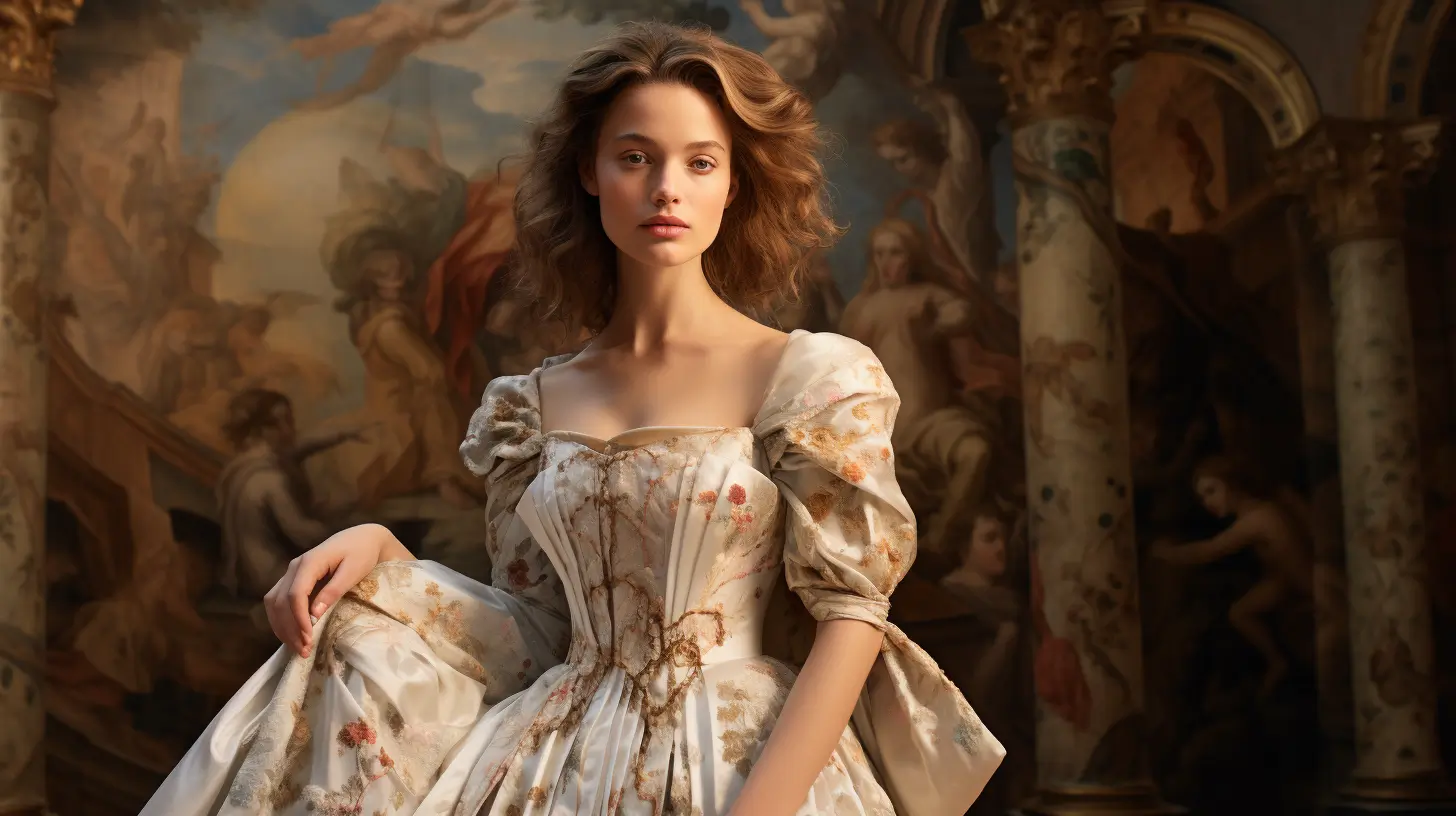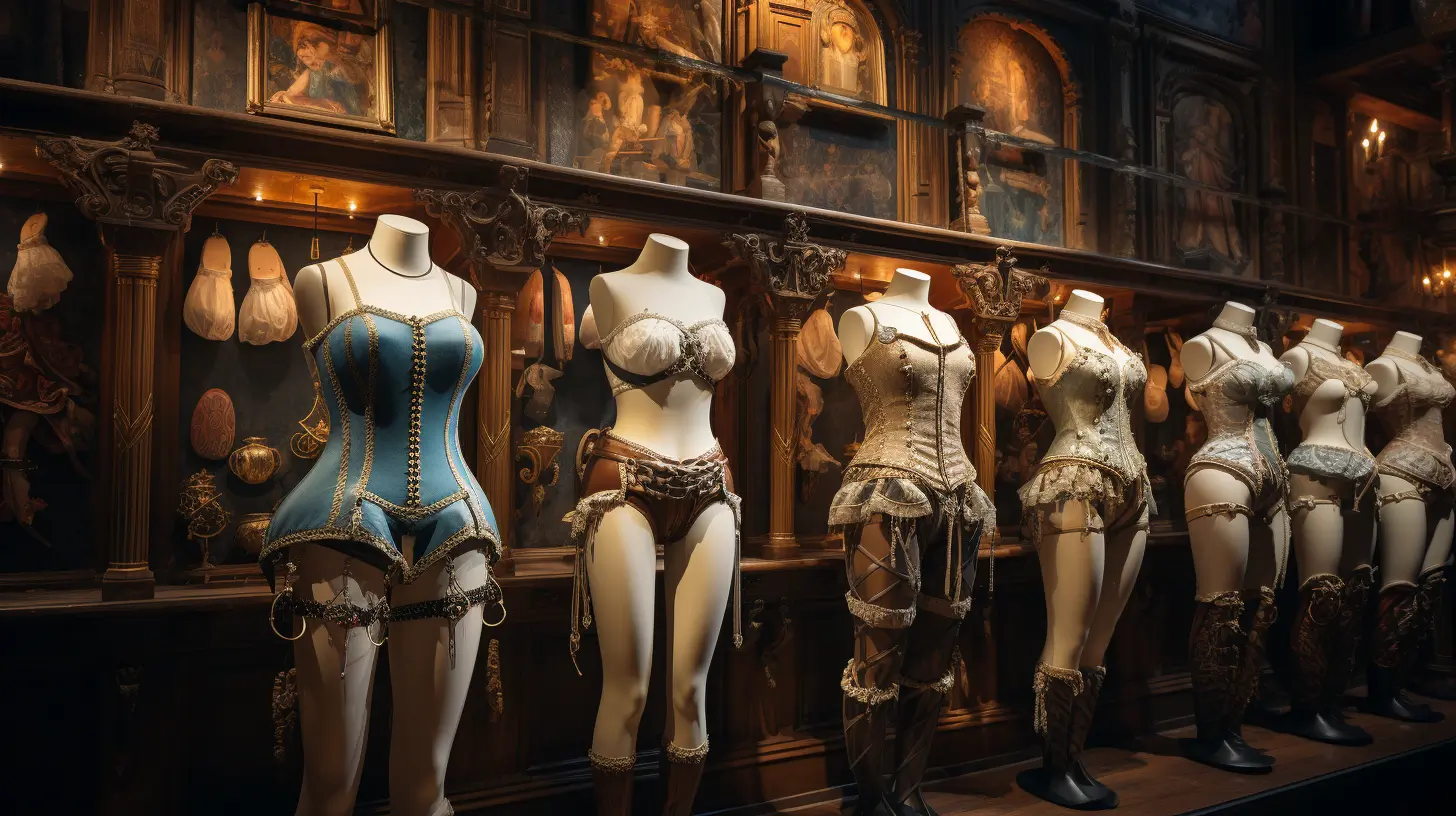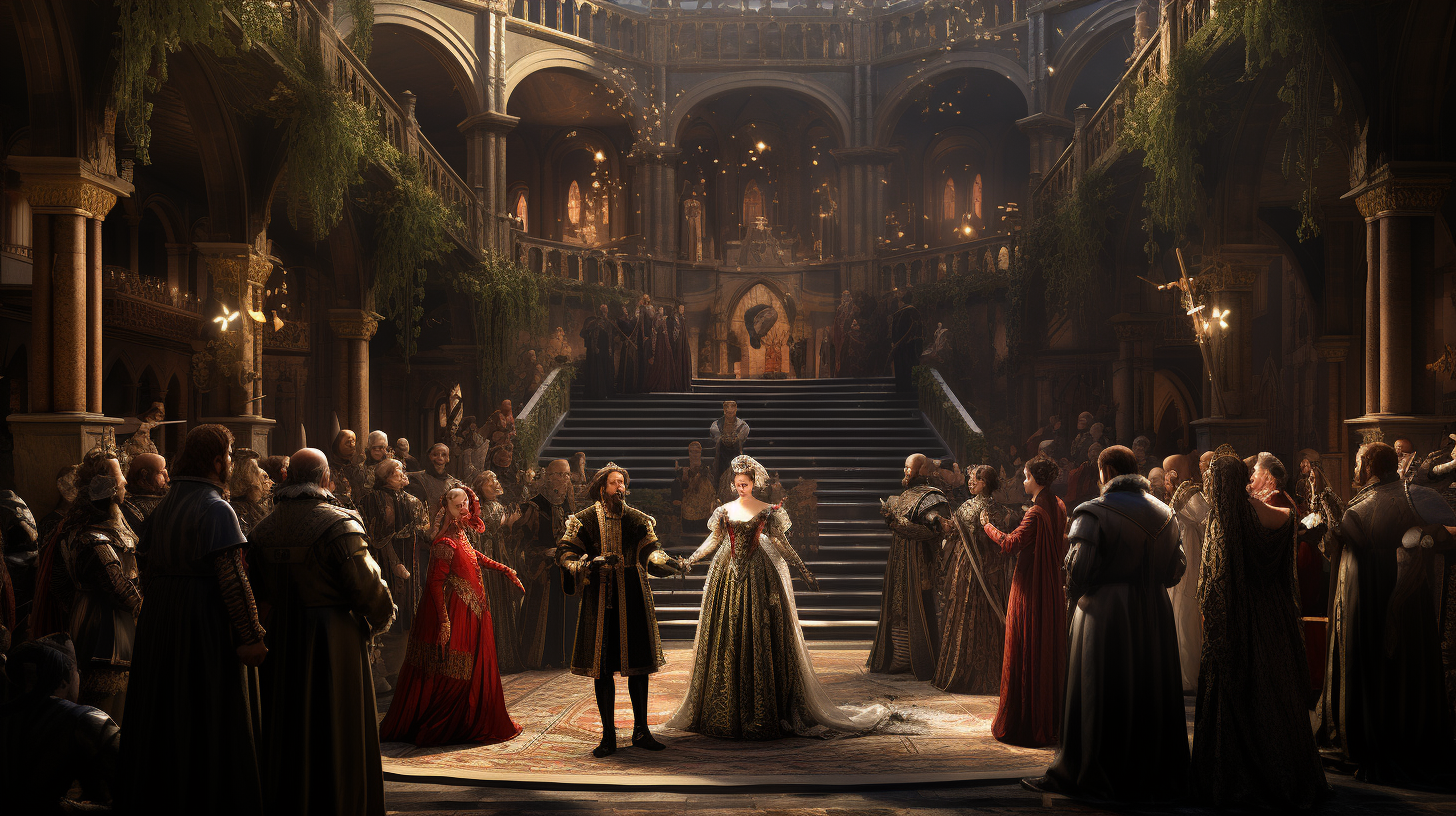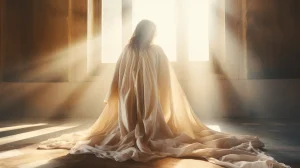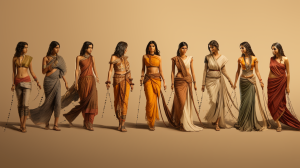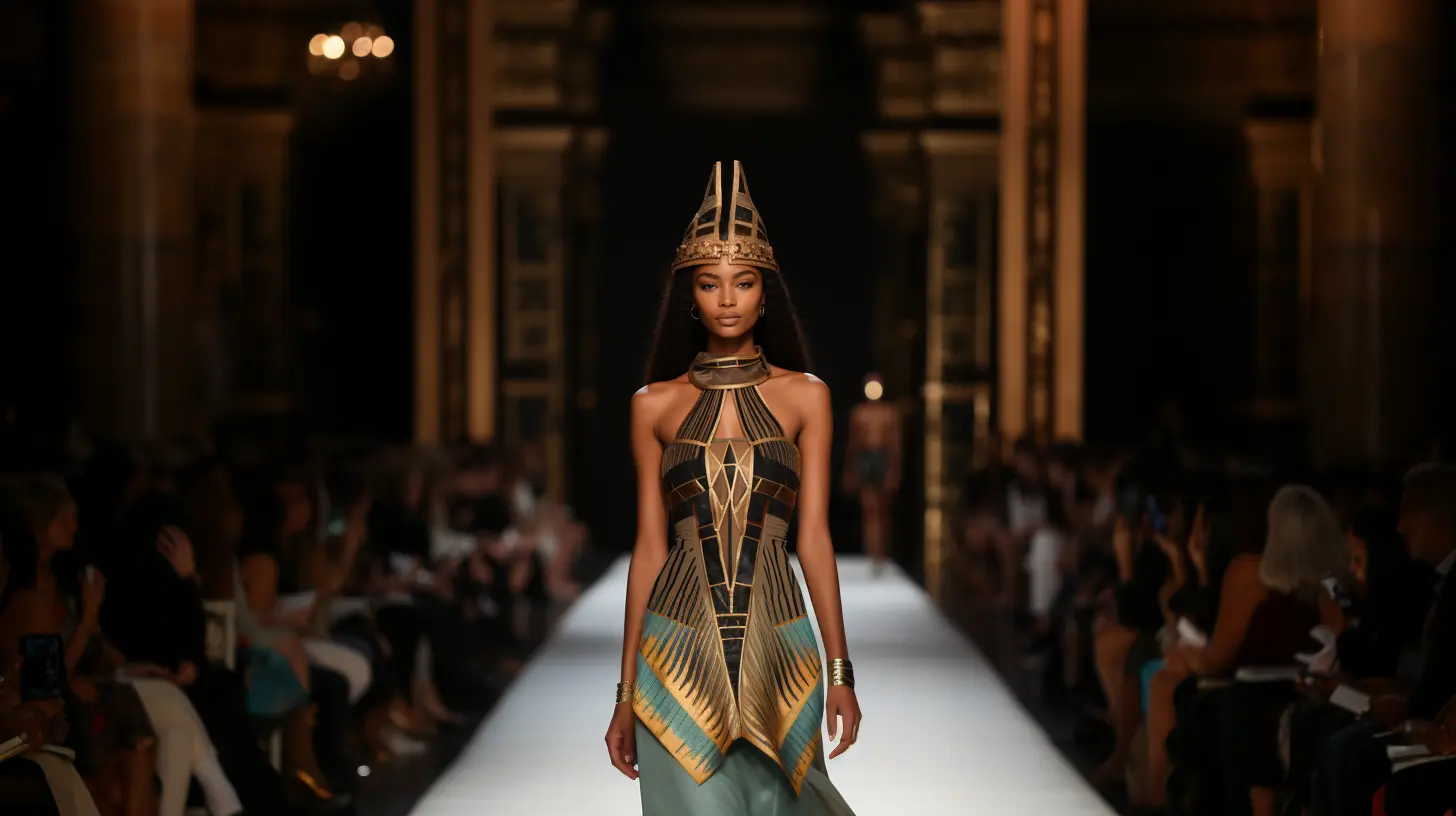
King Tut’s Style Legacy: Unveiling the Influence of Tutankhamun on Fashion
by Staff Writer Jeremy
The Golden Age of Egyptomania: A Style Revolution Unveiled
In the dimly lit corridors of history, a name shines brighter than any gemstone ever unearthed – King Tutankhamun. A Pharaoh of ancient Egypt, he slumbered in obscurity until his tomb was uncovered by Howard Carter in 1922, releasing a radiant burst of fascination that still dazzles us today. In the heart of the Roaring Twenties, as flappers danced and jazz tunes filled the air, another spectacle emerged—an unexpected merger of the past and the present, where golden treasures from the afterlife transformed into threads of modern allure.
From the banks of the Nile to the bustling streets of New York City, this is the story of a sartorial transformation that defies time and space, where relics from a civilization long gone became the driving force behind a fashion phenomenon. The discovery of Tutankhamun’s tomb ignited a frenzy of Egyptian influence that permeated every facet of culture, giving birth to what we now know as Egyptomania.
In the coming pages, journey with us through this remarkable tapestry of history and fashion, where King Tut’s relics became the muse for designers, artists, and trendsetters. Let’s delve into the depths of his tomb, where treasures beyond measure were found, and explore how this archaeological marvel gave rise to a fashion revolution that endures to this day.
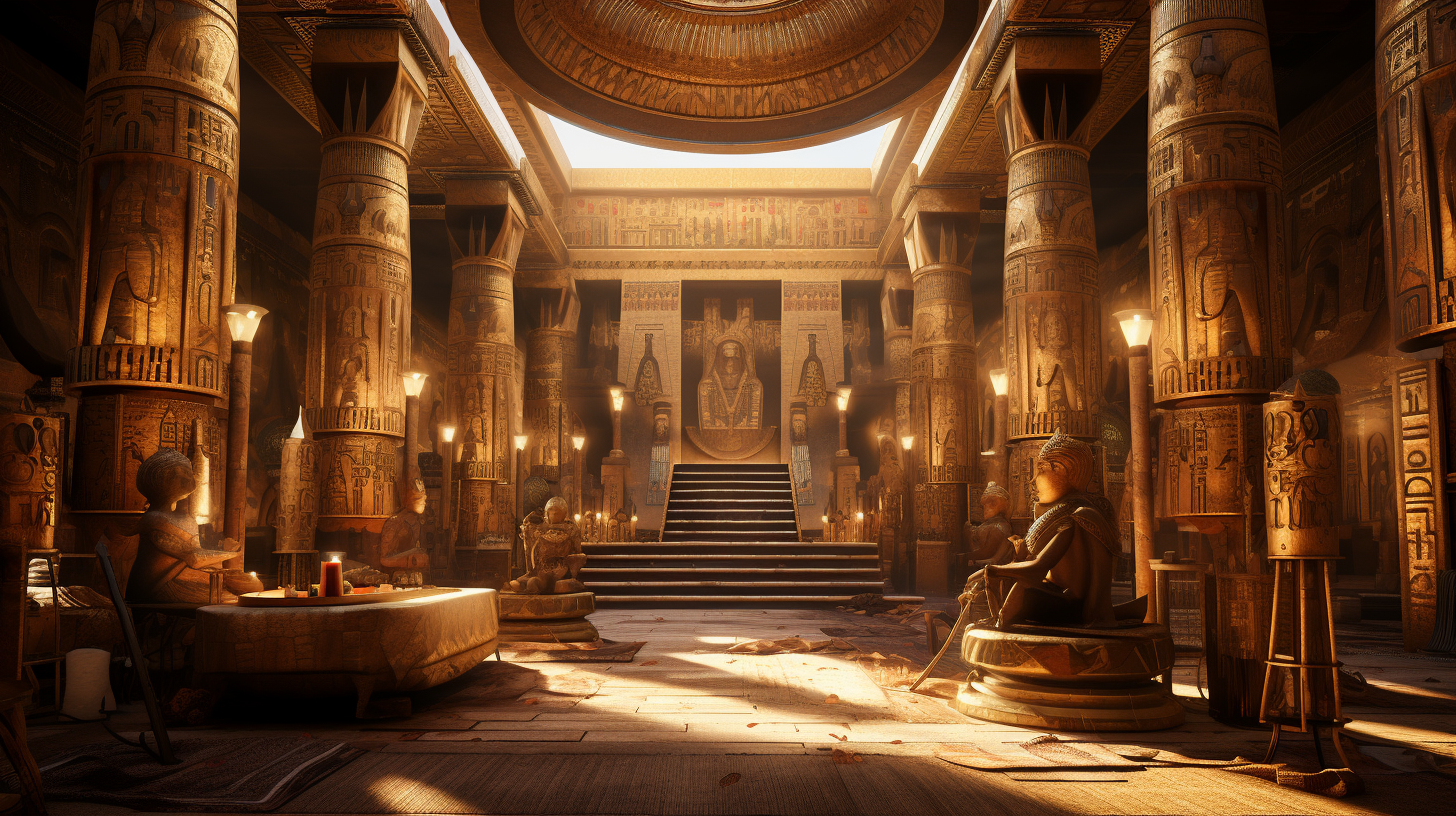
Ima1ge : An opulent Egyptian tomb bathed in a warm, golden glow. The scene is adorned with intricate hieroglyphics and glittering treasures. In the center, King Tutankhamun’s burial mask gleams, its intricate details and golden hue captivating the viewer. This image transports you to the heart of ancient Egypt’s splendor.
The Fascination Unveiled: Egyptomania in the Early 20th Century
As the world bid farewell to the 19th century and embraced the 20th with open arms, a newfound fascination was brewing—an obsession with the distant past, draped in the mysteries of Egypt. A resurgence of interest in all things Egyptian swept across the globe like wildfire, influencing art, architecture, and, most notably, fashion. The allure of the Nile’s timeless elegance and the enigmatic Pharaohs captured the collective imagination.
King Tut’s Influence on Fashion began with the early 20th century’s infatuation with the exotic. Egyptian motifs adorned jewelry, clothing, and decor. Hieroglyphics became a fashionable language, decorating accessories and fabrics. As the world set its sights on the impending discovery of King Tutankhamun’s tomb, the stage was set for a monumental shift in the world of fashion.*
The Impact of King Tut’s Tomb Discovery
In 1922, British archaeologist Howard Carter unearthed the entrance to King Tutankhamun’s burial chamber, unveiling a treasure trove that transcended time. The world watched with bated breath as history was rewritten, and the Pharaoh’s legacy was resurrected. Every artifact, every piece of jewelry, and every garment inside the tomb whispered tales of a bygone era.
The impact was seismic. Designers and tastemakers were enchanted by the opulence and intricate craftsmanship of the Egyptian artifacts. Necklaces adorned with scarabs, Nemes headdresses, and ornate cuffs became all the rage. The mystique of the ancient world was no longer confined to history books; it had stepped onto the runway and into the hearts of fashion-forward individuals.

Image : An elegant and bustling early 20th-century salon, where people are adorned in Egyptian-inspired attire. The room is bathed in soft, warm light, accentuating the intricate hieroglyphic patterns on clothing and accessories. The image captures the essence of Egyptomania in the early 20th century, with individuals exuding a sense of excitement and fascination for all things Egyptian.
The Fascination with Egyptian Aesthetics
: Adorning Elegance: Pharaoh-Inspired Jewelry and Accessories
Amid the whirlwind of Egyptomania, jewelry and accessories emerged as the canvas for artistic expression inspired by the grandeur of ancient Egypt. In the early 20th century, it became fashionable to adorn oneself with relics reminiscent of Pharaohs and their lavish lifestyles. This obsession with opulence gave rise to jewelry pieces that would become iconic.
King Tut’s Influence on Fashion was most apparent in the dazzling jewelry of the era. Scarab beetle pendants, intricately designed cuffs, and lavish necklaces reminiscent of the ancient Egyptians’ love for adornment became must-have accessories. The allure of these pieces lay not only in their exquisite craftsmanship but in their connection to a distant world steeped in mystery and grandeur.*
Weaving History: Egyptian Motifs in Clothing
Fashion designers, inspired by the mystique of ancient Egypt, embarked on a creative journey to incorporate Egyptian motifs into clothing. Hieroglyphics, lotus blossoms, and depictions of deities graced fabrics and attire. The very essence of the Nile found its way into the closets of the stylish elite.
Egyptian motifs transcended mere decoration; they became symbols of a newfound fascination with history and exoticism. Dresses adorned with hieroglyphics and headdresses reminiscent of Pharaohs’ crowns were donned by daring trendsetters. Egyptian-inspired fabrics with bold patterns added a touch of mystique to everyday wardrobes.
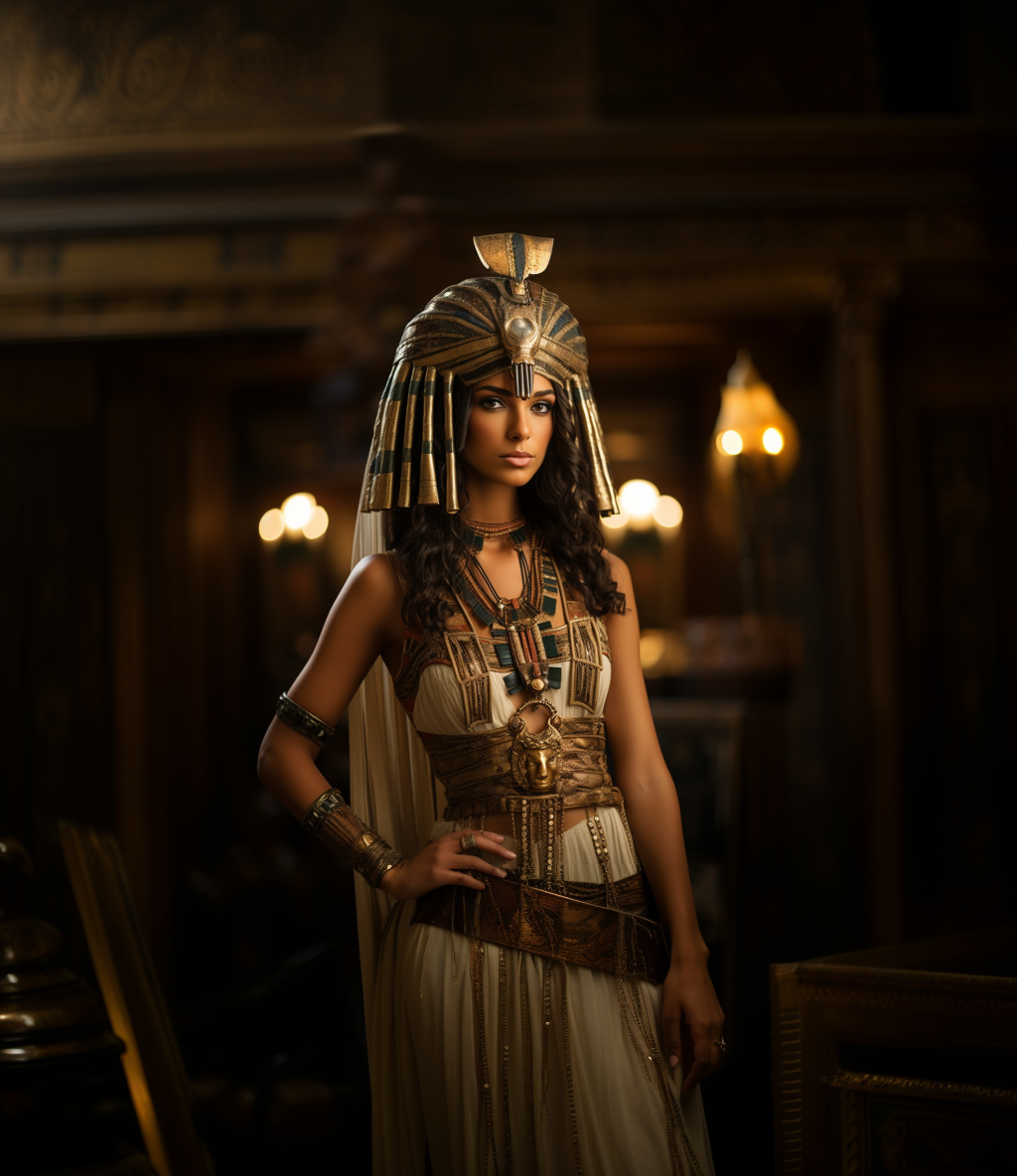
Image: An elegant lady from the early 20th century, dressed in an exquisite Egyptian-inspired gown. The dress features intricate hieroglyphic motifs that shimmer in the soft light, and she wears an ornate headdress reminiscent of Pharaohs. Her accessories include a scarab beetle pendant and a stunning cuff bracelet, all reflecting the fashion of the era influenced by King Tutankhamun’s treasures.
The “Tut-Mania” Phenomenon
A Global Obsession: Tutankhamun-Inspired Fashion Trends
As the world was swept into the throes of Egyptomania, a phenomenon known as “Tut-Mania” took center stage. King Tutankhamun’s treasures became the source of endless inspiration for fashion designers, who sought to capture the allure of ancient Egypt in their creations. The runway became a canvas for Tutankhamun-inspired fashion trends.
King Tut’s Influence on Fashion reached its zenith during this period. Dresses adorned with golden motifs and intricate beadwork graced catwalks. Accessories featuring Egyptian-inspired symbols, such as the Ankh and the Eye of Horus, became must-have items. Tutankhamun’s regal aura was translated into garments that exuded opulence and mystique.*
Celebrities Embrace the Egyptian Mystique
In the glamorous world of Hollywood, celebrities played a pivotal role in popularizing Egyptian styles. Starlets of the era donned Egyptian-inspired gowns and accessories, making a bold statement on the red carpet. The likes of Greta Garbo and Clara Bow added their star power to the Egyptomania craze.
Egyptian fashion was no longer confined to the runway; it became synonymous with high society. Celebrities and socialites embraced the allure of Tutankhamun’s world, showcasing it at glitzy parties and events. Their endorsement of Egyptian styles further fueled the fascination with King Tut and his influence on fashion.
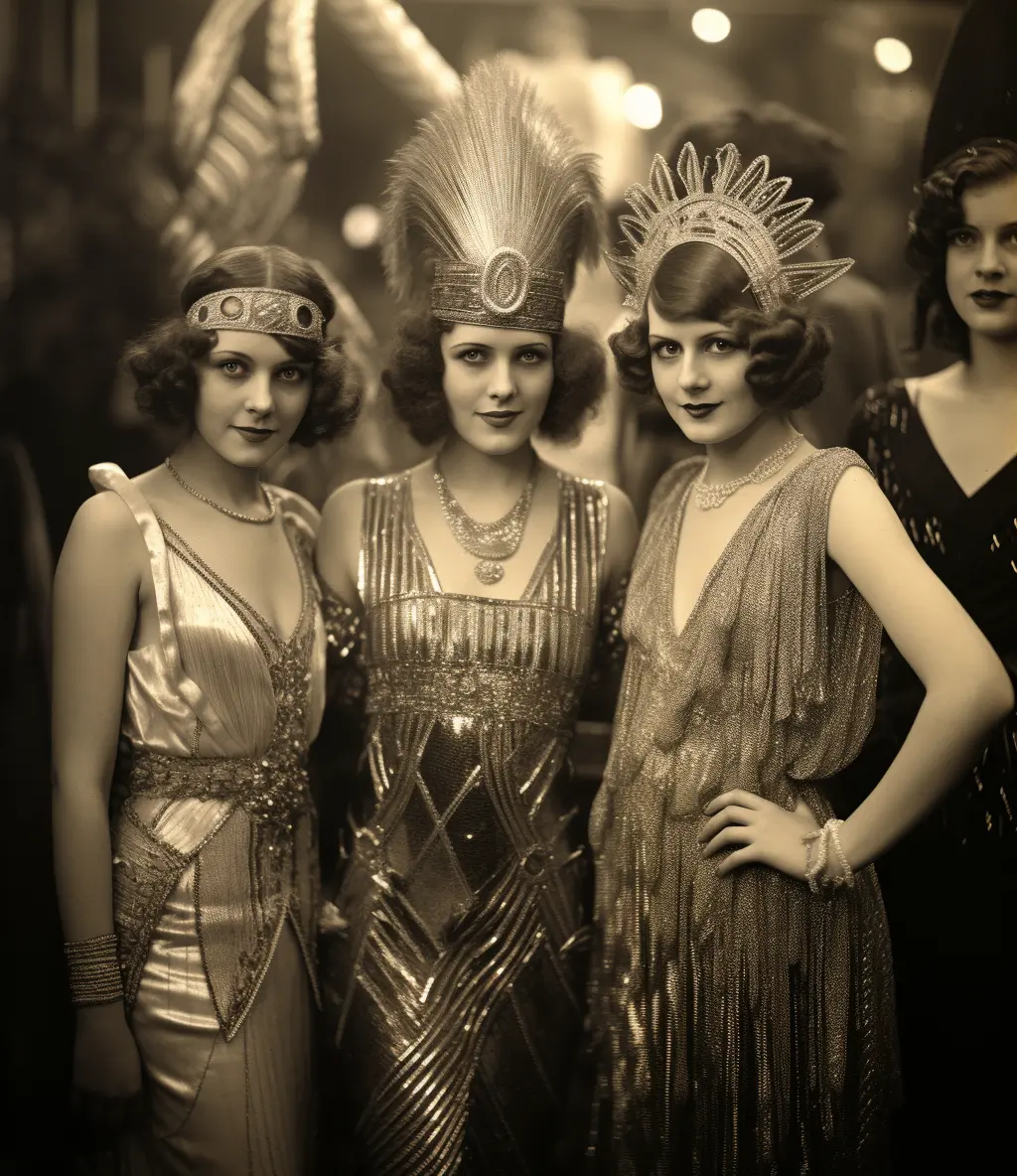
Image : A dazzling black-and-white photograph captures a Hollywood red carpet event from the 1920s. Celebrities, including Greta Garbo and Clara Bow, stand on the red carpet, dressed in exquisite Tutankhamun-inspired gowns and accessories. The image radiates the glamour and allure of Egyptian fashion, with the celebrities embodying the era’s fascination with Egyptomania.
Architectural Influences on Fashion
Ancient Aesthetics Meet Modern Buildings: Egyptian Revival in Building Design
The allure of ancient Egypt extended beyond clothing and accessories; it made its mark on architecture as well. In the early 20th century, architects drew inspiration from the grand temples and tombs of Egypt, giving rise to the Egyptian Revival movement. Buildings across the globe began to echo the mystique of the Nile.
King Tut’s Influence on Fashion was reflected in architectural marvels adorned with Egyptian motifs and hieroglyphics. Skyscrapers with Egyptian-inspired columns and facades rose to prominence. The fascination with Egyptomania permeated urban landscapes, making cities themselves a canvas for King Tut’s legacy.*
The Art Deco Movement and King Tut
The Art Deco movement, known for its embrace of elegance and luxury, found a kindred spirit in Egyptomania. This artistic and design style was heavily influenced by the discovery of King Tutankhamun’s tomb. The opulence and glamour of the Pharaoh’s treasures seamlessly integrated into the Art Deco aesthetic.
King Tut’s Influence on Fashion was evident in Art Deco’s geometric patterns and lavish ornamentation. Buildings, interior design, and even jewelry adopted the clean lines and luxurious materials synonymous with Art Deco. Tutankhamun’s legacy, with its shimmering gold and intricate details, became a cornerstone of this influential design movement.*

Image: A striking image that seamlessly blends architectural elements from the Art Deco era with Egyptian Revival motifs. A towering skyscraper with Egyptian-inspired columns and hieroglyphic friezes rises against a backdrop of a bustling cityscape. The fusion of architectural styles captures the essence of King Tut’s influence on building design, where ancient aesthetics met modern structures.
Tutankhamun’s Symbolism in Art and Design
Gilded Portraits: Artistic Depictions of King Tut
Artists and creators found themselves captivated by King Tutankhamun’s legacy, and his visage became a symbol of a bygone era’s splendor. In the early 20th century, portraits of the Pharaoh adorned the walls of galleries and private homes alike. Bold brushstrokes and intricate detailing brought Tutankhamun to life in a way that resonated with a modern audience.
King Tut’s Influence on Fashion extended into the realm of fine art. The artistic depictions of King Tut often featured him in regal attire, his golden burial mask and ornate headdress serving as focal points. These artworks not only paid homage to the Pharaoh but also celebrated the fusion of history and contemporary art.*
Luxurious Living: Influence on Interior Design
The allure of Tutankhamun’s treasures transcended the canvas and found its way into interior design. Egyptian motifs adorned furnishings, wallpapers, and decor. Homes transformed into luxurious sanctuaries inspired by the grandeur of the Nile. The legacy of Egyptomania was woven into the very fabric of living spaces.
King Tut’s Influence on Fashion* was evident in interior design’s opulent embrace of Egyptian symbolism. Luxurious fabrics, adorned with hieroglyphics and motifs, graced sofas and curtains. Statues and figurines reminiscent of ancient Egypt found their place in elegant homes. Tutankhamun’s symbolism added a touch of mystique to everyday living.*
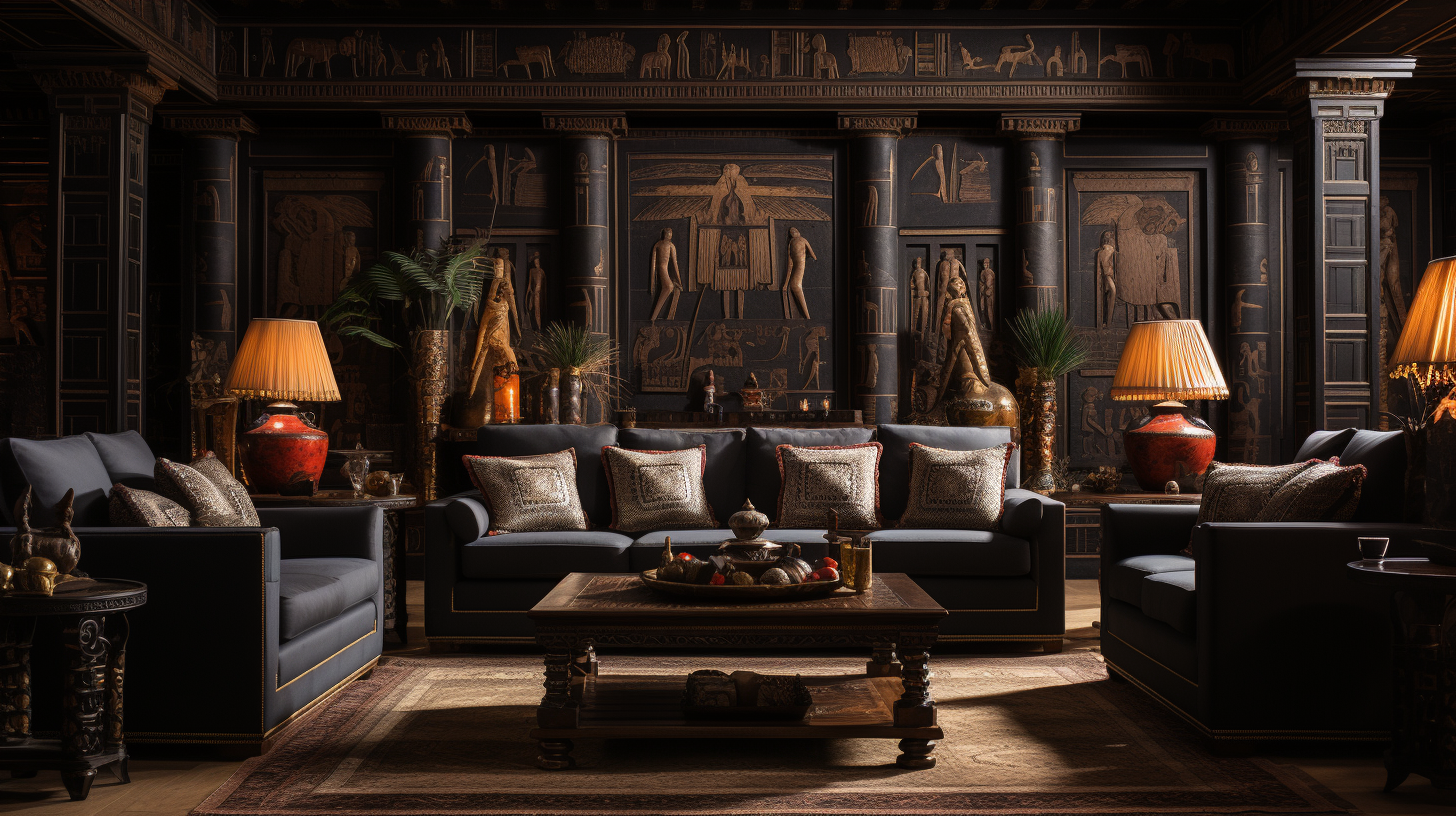
Image: A captivating image showcasing a living room adorned with Tutankhamun-inspired interior design elements. Hieroglyphic-patterned wallpaper provides a stunning backdrop, while a luxurious sofa and armchair feature exquisite Egyptian motifs. Statues of Pharaohs and Egyptian gods stand proudly on decorative pedestals. This image encapsulates the opulent and luxurious atmosphere of interior design influenced by King Tutankhamun’s treasures.
Revival of Ancient Egyptian Silhouettes
Draped in History: Egyptian Influence on Dresses and Gowns
The allure of ancient Egypt’s silhouettes beckoned designers to embrace a sense of timeless elegance. Dresses and gowns took on a new dimension as they adopted the fluid and graceful lines reminiscent of the Nile. The revival of ancient Egyptian silhouettes became a hallmark of the era’s fashion.
King Tut’s Influence on Fashion was embodied in the flowing fabrics and draped designs of dresses and gowns. The influence of ancient Egypt was palpable in the use of luxurious materials, such as silk and satin, and the incorporation of intricate beading and embroidery. These garments transported wearers to a world of regal sophistication.*
Crowned in Style: King Tut’s Headwear in Modern Fashion
King Tutankhamun’s distinctive headwear, characterized by the Nemes headdress and the uraeus cobra, left an indelible mark on modern fashion. Designers incorporated elements of the Pharaoh’s iconic headwear into hats and accessories, adding a touch of royal mystique to everyday attire.
King Tut’s Influence on Fashion* was evident in the creative reinterpretations of King Tut’s headwear. Hats adorned with cobra motifs and headdresses reminiscent of the Nemes became fashionable. These accessories were not just about style; they were a nod to the enduring legacy of a young Pharaoh who captured the world’s imagination.*
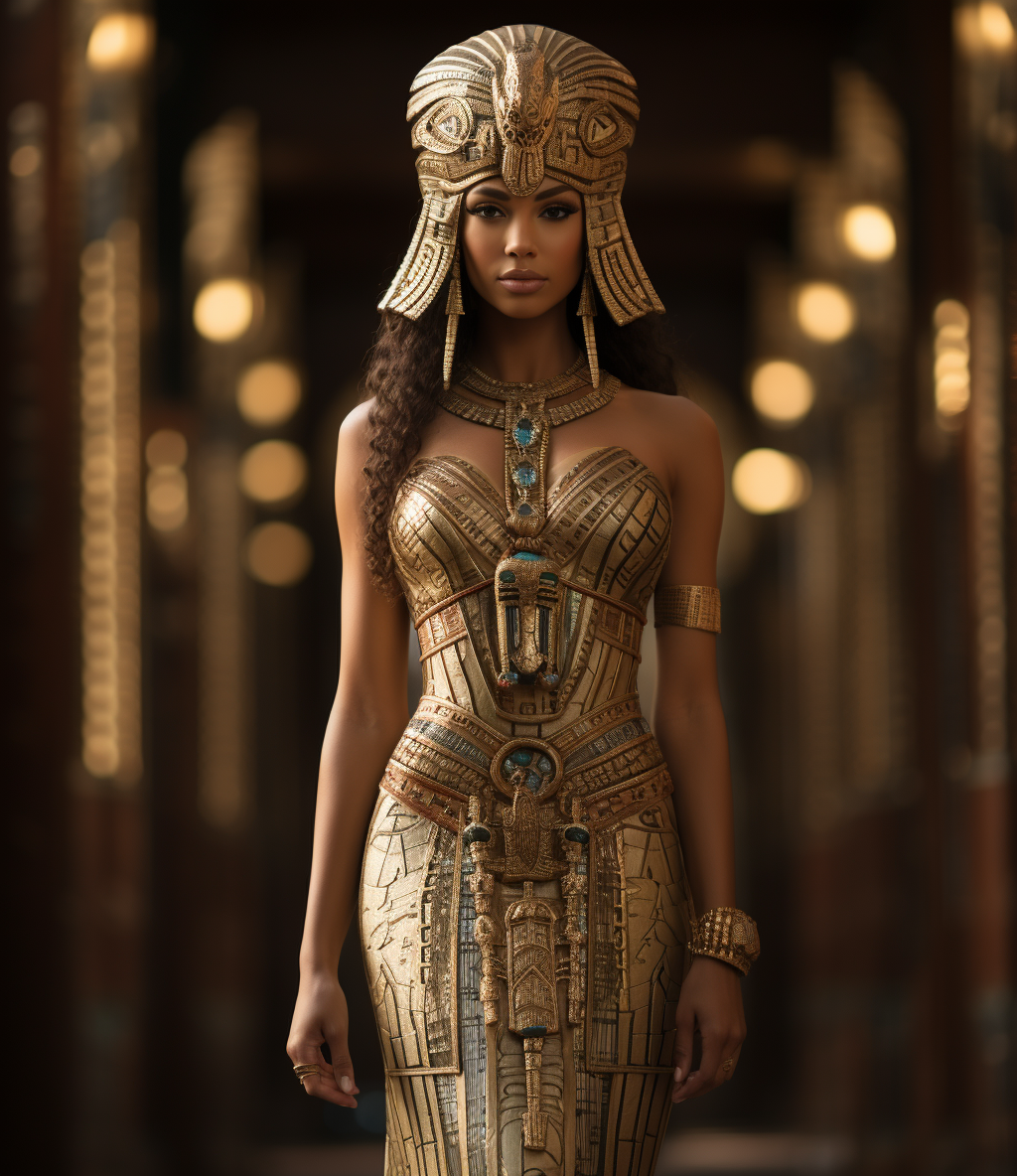
Image: An elegant and statuesque mannequin adorned in an exquisite Egyptian-inspired gown. The dress features flowing lines and intricate beading that shimmer in the soft light, echoing the revival of ancient Egyptian silhouettes. On the mannequin’s head, a striking hat with a cobra motif and elements of King Tut’s Nemes headdress adds a regal touch. This image encapsulates the fusion of ancient Egyptian elegance with modern fashion.
Contemporary Interpretations
Modern Runway Collections: Reimagining Egyptomania
The fascination with Egyptomania continues to shape the world of fashion, with modern designers embracing the mystique of ancient Egypt in their runway collections. Runways have become a canvas for contemporary interpretations of King Tutankhamun’s influence on fashion. King Tut’s Influence on Fashion is very much alive.
In these collections, we see a fusion of past and present. Designers draw inspiration from Tutankhamun’s treasures, incorporating Egyptian motifs, golden hues, and intricate detailing. These runway pieces pay homage to the enduring legacy of Egyptomania, showcasing the timeless allure of ancient Egypt.
Streetwear and Pop Culture References: King Tut Goes Mainstream
Egyptomania has transcended high fashion and permeated streetwear and pop culture. References to King Tut and ancient Egypt can be spotted in everyday attire, from graphic tees to sneakers. The Pharaoh’s influence has become a part of mainstream fashion, embraced by a global audience.
King Tut’s Influence on Fashion is evident in the bold graphics and pop culture references that adorn clothing and accessories. King Tut’s iconic burial mask and hieroglyphic symbols find their way onto everyday items, making a statement about the enduring fascination with the Nile’s mysteries.
Section 8: King Tut’s Legacy in Jewelry and Accessories
Adorning Eternity: Egyptian-Inspired Jewelry Brands
King Tutankhamun’s influence on fashion extends its reach to the world of jewelry and accessories. Egyptian-inspired jewelry brands have embraced the allure of ancient Egypt, crafting pieces that pay homage to the timeless elegance of the Nile. King Tut’s Influence on Fashion gleams in these exquisite creations.
These brands, inspired by the Pharaoh’s treasures, bring the opulence of ancient Egypt to the modern world. Their collections feature scarab beetle motifs, Ankh symbols, and ornate designs reminiscent of Tutankhamun’s jewelry. Each piece is a work of art that captures the essence of Egyptomania.
Collectible King Tut Memorabilia: A Fashionable Tribute
King Tutankhamun’s legacy has given rise to a market for collectible memorabilia that combines history and fashion. Enthusiasts seek out King Tut-themed accessories and items that serve as fashionable tributes to the Pharaoh. These collectibles have become sought-after treasures in their own right.
King Tut’s Influence on Fashion is manifest in the variety of King Tut memorabilia available, from jewelry to scarves and even handbags. These items often feature artistic renditions of the Pharaoh’s likeness and symbols of ancient Egypt. Owning a piece of King Tut’s legacy has become a fashionable statement.*
Image Description: A captivating image that showcases a collection of exquisite Egyptian-inspired jewelry. The pieces include intricately designed scarab beetle pendants, Ankh symbol necklaces, and ornate cuffs, all gleaming with a golden hue. The image exudes the opulence and elegance of King Tut’s influence on jewelry and accessories.


